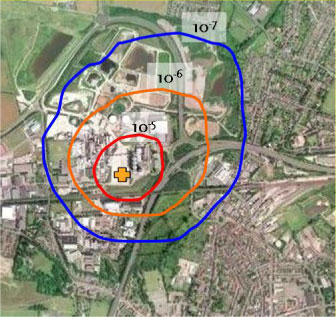Risk metrics
Measuring safety performance to improve risk management
Overview
 Measurement is a key step in any management
process and forms the basis of continual improvement. However,
safety performance is difficult to measure, because:
Measurement is a key step in any management
process and forms the basis of continual improvement. However,
safety performance is difficult to measure, because:
- success results in the absence of an outcome (injuries, losses, health impacts)
- safety is a “dynamic non-event” [K. Weick]
- low incident rates, even over several years, do not guarantee that major accident hazards are controlled
As a result, there is no single and easy to measure indicator for safety and safety performance (a “KPI” in management-speak). These slides describe different approaches to expressing risk to people, including individual risk measures such as IRPA, measures of societal risk such as F-N curves and PLL, and occupational safety metrics such as LTRIR. They also highlight a number of unintended consequences that may arise if safety managers, insurers and regulators adopt a simple-minded, mechanistic approach to the use of metrics in risk management.
This submodule is a part of the risk management module.
Course material
 |
Risk metrics |
Other resources
We recommend the following sources of further information on this topic:
A guide to measuring health & safety performance, UK Health and Safety Executive (2001)
CCPS book Guidelines for Process Safety Metrics, Wiley, 2009, (ISBN: 978-0-470-57212-2)
Chapter Risk measurement and metrics of the free textbook Enterprise and individual risk management
Metrics for financial risk: see the slideset on Estimating Value at Risk
FAA report Transforming Risk Management: Understanding the Challenges of Safety Risk Measurement
Guidelines for Developing Quantaititve Safety Risk Criteria, CCPS, 2009 (ISBN: 978-0470552940)
Published: